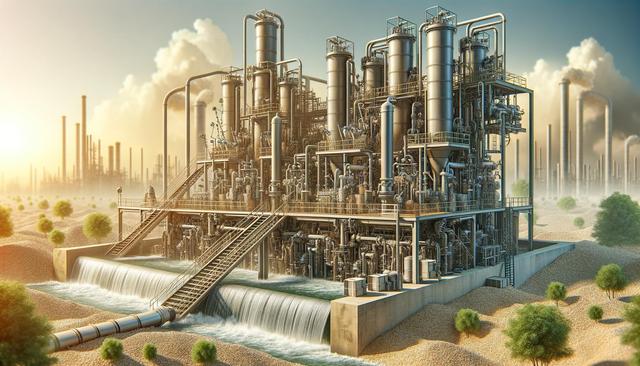Understanding the Principles of Advanced Sludge Dewatering Using Filter Press Systems
Advanced Sludge Dewatering Using Filter Press Systems is a widely adopted method in industrial and municipal wastewater treatment. This process effectively separates liquids from solids by applying high-pressure filtration to sludge materials. Filter press systems typically operate using a series of plates and frames lined with filter cloths. Sludge is pumped into the system, and pressure is applied to push the liquid through the cloth, leaving behind a cake of dewatered solids. The efficiency of this approach makes it suitable for a variety of applications including chemical, food processing, mining, and pharmaceutical industries.
The main advantage of Advanced Sludge Dewatering Using Filter Press Systems lies in its ability to handle high volumes of sludge while achieving substantial reductions in moisture content. This not only minimizes the weight and volume of waste but also makes the residual material easier and more cost-effective to transport and dispose of. Moreover, the clear filtrate obtained can often be reused or safely discharged, depending on the application and level of treatment.
Key Components and Operating Mechanism
To understand how Advanced Sludge Dewatering Using Filter Press Systems function, it is important to look at their primary components and how they are integrated into the dewatering process. The core parts of a filter press include:
- Filter plates and frames: These create chambers where sludge is compressed.
- Hydraulic system: Applies the necessary pressure to the plates.
- Filter cloths: Fabric that captures solids while allowing liquid to pass through.
- Feed pump: Delivers sludge into the press at high pressure.
During operation, the feed pump pushes sludge into the chambers formed by the plates. As the liquid phase is forced through the filter cloths, solid particles accumulate and form a dense filter cake. Once dewatering is complete, the plates are separated to release the cake, which can then be collected for disposal or further processing. The system can be operated manually, semi-automatically, or fully automatically, depending on the required capacity and level of automation.
Benefits for Industrial Waste Management
Advanced Sludge Dewatering Using Filter Press Systems delivers several operational and environmental benefits. One of the most significant advantages is the reduction in waste volume, which directly correlates to lower disposal costs. Industries that generate large amounts of sludge can benefit from the following:
- Lower transportation and landfill costs due to reduced sludge volume.
- Improved handling and storage of dewatered solids.
- Enhanced compliance with environmental regulations.
- Potential reuse of filtered water in industrial processes.
In addition to cost savings, using filter press systems contributes to sustainability goals. By reducing the volume of waste and enabling water reuse, companies can decrease their environmental footprint. This is particularly important for sectors with stringent environmental compliance requirements or those aiming to implement circular economy practices.
Applications Across Different Sectors
Advanced Sludge Dewatering Using Filter Press Systems is applicable across a broad spectrum of industries. Each sector may have different sludge characteristics, but the core functionality of the filter press remains effective in achieving dewatering objectives. Common industries that benefit from this technology include:
- Mining: For separating tailings and managing mineral slurries.
- Food and beverage: For processing byproducts and cleaning wastewater.
- Chemical manufacturing: For managing waste streams and recovering valuable materials.
- Municipal wastewater treatment: For dewatering biosolids before disposal.
Each application may require customization in terms of filter cloth material, plate design, and system automation. Flexibility in design allows filter press systems to adapt to varying operational needs, ensuring optimal performance and long-term reliability. Additionally, advancements in materials and control systems have improved the efficiency and ease of maintenance for these systems.
Enhancing Efficiency Through Automation and Maintenance
Modern implementations of Advanced Sludge Dewatering Using Filter Press Systems increasingly incorporate automation to boost efficiency and reduce labor requirements. Automated plate shifters, cake discharge systems, and programmable logic controllers (PLCs) streamline the dewatering process and enhance throughput. These features not only reduce manual intervention but also improve consistency in operation and safety for operators.
Regular maintenance is essential to ensure long-term performance and avoid costly downtime. Key maintenance practices include:
- Routine inspection of filter cloths for wear or clogging.
- Checking hydraulic systems for leaks or pressure inconsistencies.
- Cleaning of plates to prevent buildup of solids.
- Monitoring pump performance and replacing seals as needed.
Investing in operator training and preventive maintenance programs can significantly extend the lifespan of the equipment. As industries aim for higher process efficiency and lower operational costs, well-maintained and automated filter press systems become a valuable asset in sludge management strategies.
Conclusion: A Strategic Approach to Wastewater Management
Advanced Sludge Dewatering Using Filter Press Systems presents a practical and sustainable solution for industries seeking to manage sludge efficiently while meeting regulatory and environmental standards. With the ability to reduce waste volume, lower disposal costs, and enable water reuse, these systems support both economic and ecological goals. Their adaptability across different sectors and ease of integration into existing processes make them an important component of modern wastewater treatment strategies. For businesses aiming to enhance operational efficiency and reduce their environmental impact, adopting advanced filter press technology is a forward-thinking investment.




Leave a Reply